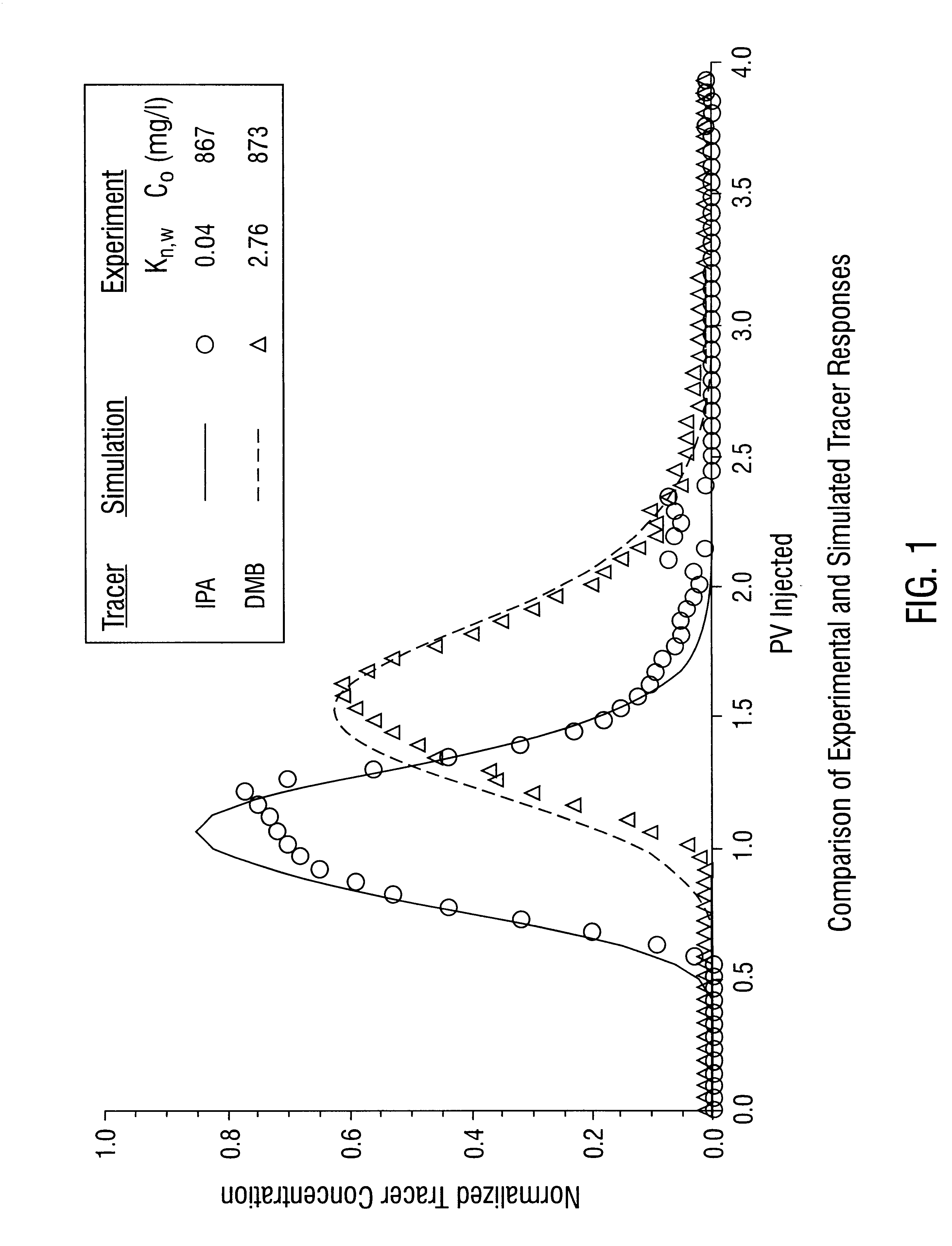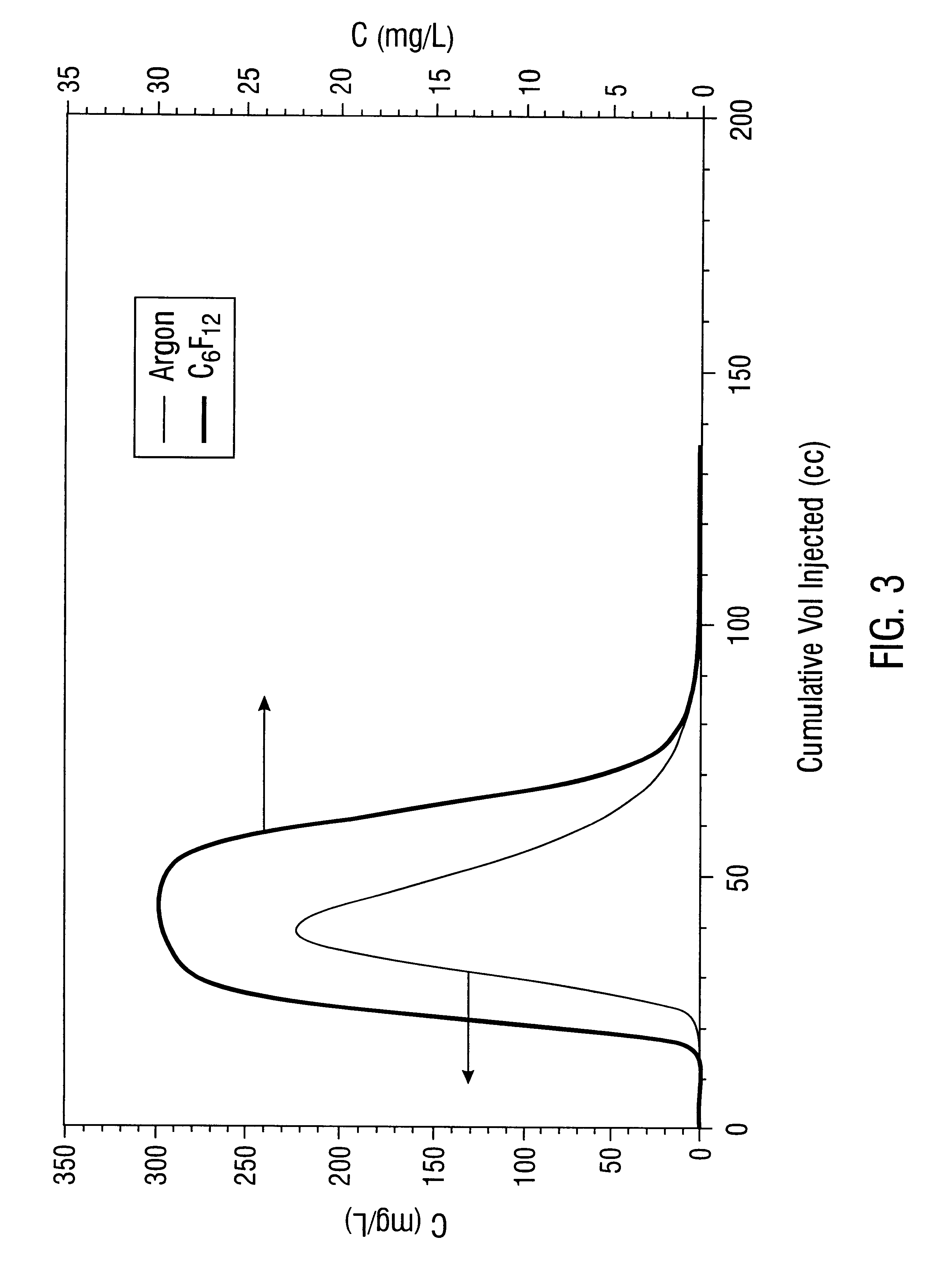Characterization of organic contaminants and assessment of remediation performance in subsurface formations
a technology of organic contaminants and remediation performance, which is applied in the direction of survey, instruments, borehole/well accessories, etc., can solve the problems of dnapl site characterization, groundwater supply contamination, and quantitative removal
- Summary
- Abstract
- Description
- Claims
- Application Information
AI Technical Summary
Problems solved by technology
Method used
Image
Examples
example 2
Performance Assessment of a Remediation
The contaminated sand from Example 1 was cleaned by flushing the sand with an aqueous solution of surfactant until all the trichloroethene was removed to thereby simulate a successful remediation. The procedure of Example 1 was then repeated. The results are shown in FIG. 2. Since no NAPL is present in which DMB can partition into, the IPA and DMB travel through the sand at the same rate and, accordingly, FIG. 2 shows overlap of breakthrough curves of the IPA and DMB. Thus, the absence of NAPL in the sand can be inferred, thereby indicating a successful remediation.
example 3
Use of Tracers to Determine Presence and Volume of DNAPL in Unsaturated Sand
The perfluorocarbon tracers (PFTS) used in this Example were purchased from PCR, Inc. Table 1 lists some of the properties of the selected PFTs as well as those of the other two gases of interest.
The NAPL used to examine the partitioning of perfluorocarbon gases was trichloroethylene (TCE, Certified ACS) obtained from Fisher Scientific. The density of TCE at 20.degree. C. is 1.462 g / cc. Its molecular weight is 131.39 g / mole and its vapor pressure is 1.16 psi at 20.degree. C.
Ottawa sand, purchased from U.S. Silicon, was used in this experiment. The sand has a size range from 40 to 140 U.S. sieve numbers or 0.425 to 0.105 mm. The sand was washed with hydrochloric acid (4N) and baked for 24 hours to remove fine materials and possible organics.
Column Procedures
Three columns were prepared for each experiment: (1) a contaminated primary column (2.5 cm.times.30 cm) saturated with residual water and TCE; (2) a conta...
PUM
 Login to View More
Login to View More Abstract
Description
Claims
Application Information
 Login to View More
Login to View More - R&D
- Intellectual Property
- Life Sciences
- Materials
- Tech Scout
- Unparalleled Data Quality
- Higher Quality Content
- 60% Fewer Hallucinations
Browse by: Latest US Patents, China's latest patents, Technical Efficacy Thesaurus, Application Domain, Technology Topic, Popular Technical Reports.
© 2025 PatSnap. All rights reserved.Legal|Privacy policy|Modern Slavery Act Transparency Statement|Sitemap|About US| Contact US: help@patsnap.com



